it's that time of year again when the mercury rises a little higher and saturday cruises are plentiful, so I thought I'd add to the plethora of recent cooling system threads.
For those who are interested in the additional space and slight HP increase of an electric fan setup, but aren't too keen on spending $400, this is what you're looking for. The two speed electric fan from the 1994 to 1998 Ford Taurus or Mercury Sable with the 3.8L engine are readily available at most junkyards for around $25 or less. I got mine for $20 so the guy wouldn't have to make any change :laughing:
It's a 16" diameter fan and I've seen a variety of CFM ratings. The general consensus is that on low speed it pulls about 2000 CFM and on high upwards of 3500 CFM :surprised Not too shabby for a junkyard fan. It's easy to see why this is such a popular conversion on lots of other cars from offroad rigs to hotrods. I'm surprised I've never seen one on a 'vette before. However, it can be a power hog on the high speed. Again, drawing on internet research the fans are said to draw up to 90 amps on startup of the high speed and up to a continuous 33 amps. A bit much for 10 gage wire and a 30 amp fuse, but you should be able to rely on the low speed and use the high speed only for extreme cases. Unfortunately I don't have an ammeter much less an oscilloscope to confirm or deny any of those numbers.
I mounted the fan to a 31" Tru-Kool radiator that I did an install thread about a year ago: cheap cooling sytem upgrade thread
I got some 1/8" by 1" aluminum and some 1/4" bolts and washers from Ace hardware. I bent the aluminum to make 4 brackets that wrap around the top and bottom flanges of the radiator and bolt to the fan shroud. Here's the fan with the brackets mounted up:

I also cut 4 slots in the shroud to get a wrench on the nyloc nut on the inside of the shroud. This makes installing/removing the fan from the radiator much easier.


So you've got the fan mounted to the radiator, now how do you make it all work? I wired mine up to use two temp switches. I put a 195* temp switch up by the radiator inlet and a 185* temp switch by the radiator exit. The 185* switch controls the low speed of the fan, the 195* switch controls the high speed. In theory, the low speed switch should kick in before the high speed switch because the water coming past the thermostat shouldn't be too much higher than 180*. Once the low speed fan has turned on it should be able to maintain enough cooling for normal conditions. The 195* high speed should be only for extreme cases. Here's the wiring diagram for such a setup:

However, after a little testing (more on that later) I've found that I'm better off just running the low speed fan. The fan runs less and still provides plenty of airflow through that big alum radiator. Here's a simplified diagram for just one switch:

Don't forget to run a ground wire from the radiator to the frame. The temp switches ground through the threads, so don't use any sealant or teflon tape on there.
I got the wire and SPST from Radio Shack and the SPDT relay and most of the crimp terminals from Autozone. If I were to do it all again I'd get actual Bosch relays online since they're pretty reasonably priced.

https://www.summitracing.com/parts/dak-pac-2750/reviews

Initial Reaction/Evaluation:
The 195* switch needs to be at least a 205*. It would come on all the time and run way too long after the engine is shut off. Oddly enough, it would run for maybe 30 seconds after killing the engine and then shut off. But within a few minutes it would come back on and then run for 10 to 15 minutes. At this point I just disconnected the wire going to that switch and am very happy using only the lower switch. I duct taped my multimeter to the windshield and could watch it kick on and off as I drove around the neighborhood and it stayed off most of the time I was over 55 mph.
I have also noticed that the battery guage in the center console sits at +20 most of the time. I'm assuming this is an ammeter since its range is -40 to +40. If the engine is off and the fan is on, it sits at 0. But if the engine is on it sits at +20. Is this normal and I just haven't noticed it before now? Or is the alternator somehow seems the additional current draw of the fan and overcompensting? Do I need to upgrade alternators?
I did not notice any major performance increase. It's tough to compare to 3 weeks ago when I drove it last, but I'd definitely say a clutch fan in good working order is not sucking that much HP. Don't expect to see 15 HP on the dyno because you switched to an electric fan.
All in all I'm very pleased. It cools like a champ and opens up a LOT of room in front of the engine. Also gets that finger chopper out of the way.
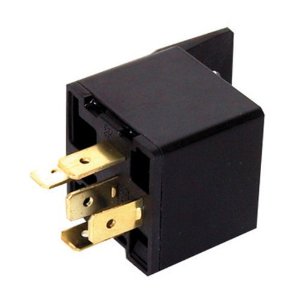
relay
http://www.amazon.com/Absolute-RLS125-1 ... 436&sr=1-1
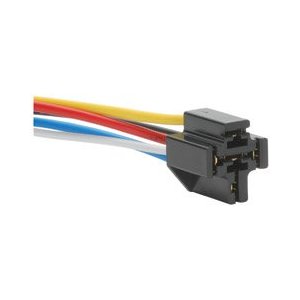
got some good info...
Alternator is getting VERY HOT. Definitely the source of the hot electronics smell. After 15 minutes of testing with the engine at idle I could comfortably rest my hand on the steering box. I touched the alternator and damn near cooked my fingers. Not driving this thing until I get a new one. It might have something to do with the fact that it's a 42 Amp alternator :lookinup: Guess that's what you get when you have no options whatsoever.
Here's the data:

reving it up to 2500 rpm only got the voltage up to 13.27 V
I recieved a few questions via PM and thought I'd post the answers here in case it helps someone else.
When i buy a fan do i want a pusher or puller?
depends on which side of the radiator you want to mount it on. If you want it on the back of the radiator (typical instll) you need a fan to pull the air through the radiator. If you want it on the front of the rad, you need a fan to push it through the radiator. The Taurus fan is obviously a puller.
Wiring, relays, switches?? what and where, or what would i ask for if i went to advanced auto.
Crash course in relays:
A relay uses a low current (control) circuit to switch a high current (power) circuit on and off. We use the temperature switches to open or close the control circuit. When the 185* temp switch is exposed to 185* coolant it switches closed and completes the control circuit. The relay sees that and closes the power circuit, sending power to the fan. The temp switch will open at 20* cooler than where it opened. Check here for more in-depth explanation: http://www.bcae1.com/relays.htm
Bosch part numbers for the relays:
40 Amp SPDT - 332 209 150
40 Amp SPST - 332 019 150
http://terminalsupplyco.com/Store/Default.aspx?CAT=EC070010
Speedway Motors part numbers for Spal Temp Switches:
195* on 175* off - 91064026-195
185* on 165* off - 91064026-185
If you look around Speedway's site or Summit you can find wiring harnesses for fairly cheap that will save your some effort of putting together the harness from scratch. I haven't seen one set up for 2 switches, but as I stated above, that didn't appear to be necessary.
What do i use for a 12 volt power source?
I ran power from the large terminal on the starter. Take a voltmeter under the car with you (if you don't have a voltmeter, get one. A cheap one from Radio Shack or Autozone will work. I have a handy automotive multimeter from Autozone that tells engine RPM, dwell, etc. Great tool for $45). Put one wire from the voltmeter to a clean spot on the frame. That's your ground, so typically use the black wire from the meter. Now put the other wire on the big starter terminal. You should see around 12 volts displayed on the meter. If not, try the other terminals until you find the right one.
Another alternative would be to get power from the power block (I think that's what it's called) mounted on the driver's side fender. Look for several heavy wires going to a couple terminals. Same procedure to find the 12V source. The power block may be a switched source, so test that one with the key in the "on" position.
Can i just wire everything up to a switch and mount it on my console??
That is one option, but it's dangerous. All you have to do is forget to switch it on and you'll cook your engine. Not something I'd want to risk. The absolute simplest alternative it to just hook the fan to a switched voltage source (only gets power when the key is in the "on" position). Then any time the engine is running the fan is running. That method is harder on your alternator and the fan as well as the rest of your electrical system. Just like any other component, these things have an expected life. So running the fan when it doesn't need to be on will burn it out sooner.
Hope that helps. Best of luck!
theres also aftermarket kits!
theres INSTRUCTIONS with the kit, but basically you install the sensor and wire in any fan you choose to , following those instructions and using the new sensor. you can use the original fan, but in most cases a larger aftermarket fan or an additional transmission cooler is used. the sensor screws into the cylinder head
you can also install just an aftermarket fan
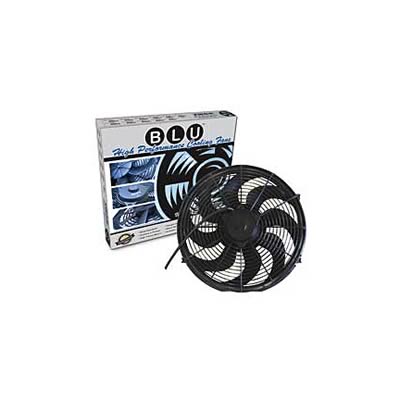
http://store.summitracing.com/partdetail.asp?autofilter=1&part=FLX-365&N=700+115&autoview=sku
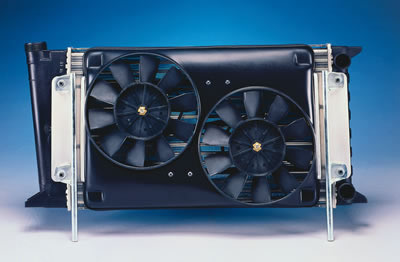
http://store.summitracing.com/partdetail.asp?autofilter=1&part=HFM-ZFB16S&N=700+320174+4294775279+115&autoview=sku
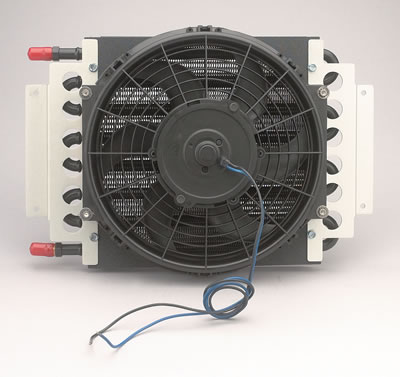
http://store.summitracing.com/partdetail.asp?autofilter=1&part=DER-13720&N=700+115&autoview=sku
http://store.summitracing.com/partdetail.asp?autofilter=1&part=DER-15800&N=700+115&autoview=sku
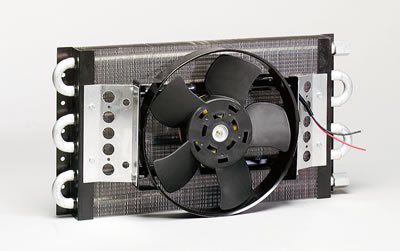
http://store.summitracing.com/partdetail.asp?autofilter=1&part=PRM-12318&N=700+115&autoview=sku
http://garage.grumpysperformance.co...lf-the-time-starts-and-dies.11187/#post-50245
IM currently using this on my 1985 corvertte but have used others in the past
IF YOUR ON A REALLY LIMITED BUDGET, TAURUS FANS FROM A SALVAGE YARD CAN NORMALLY BE FOUND DIRT CHEAP........HERES INFO LARRY POSTED


"The two diagrams above show how to build and wire an auto relay switched 2-speed FORD TAURUS fan.
Parts needed......10 guage wire for the power circuit. 18 guage wire for the control cicuit.
Three relays..... 1) High speed relay, Tyco VF7-12V,70amps
2)Low speed relay and Aux relay, standard BOSCH relays
Two switches,,,,.1)Low speed temp. switch- Adj. Flexilite, FLX-31147 from SUMMIT.
2)High speed temp. switch from Standard Motor Products, TS-158 or TS-392.
I put the adj. low speed switch and the three relays in seperate relay boxes and mounted them in the engine comp. The high speed temp switch I mounted where one of the heater hoses went. Est. cost of parts, less the fan, is $50.00 . 10 guage wire is used in the power circuit and 18 guage in the control circuit. The 12V switched control circuit can be connected to any live connection with ignition on.
The control circuit shown is as follows..... When the temp. reaches your set low speed figure, let's say 190 deg.the low speed relay is energized thru pin 86, 85 connects to 87A of the AUX relay and pulls 30 of that relay, 87 of the low speed relay and 30 are closed sending power to the fan to run at low speed.
When the temp. reaches your high speed switch figure, let's say 210 deg. pin 86 of the AUX. relay energizes thru 85 and 30 releases from 87A of the low speed relay and connects with 85 of the high speed relay which thru 87 of that relay powers the fan to run at high speed.
ARE we confused yet?????
When the temp falls below the high speed swich figure the AUX relay will switch back to the low speed relay.
Therfore low and high speeds will never be on at the same time and you will have the following conditions...
1) No fan on.
2) Low speed on.
3) High speed on."
BTW
the out flow connection for the trans flluid from the trans which should go to the radiator LOWER connection.
Just remove or re-route the upper radiator connection and run it thru your choice of external cooler and back to the tranny return line (upper radiator connection).

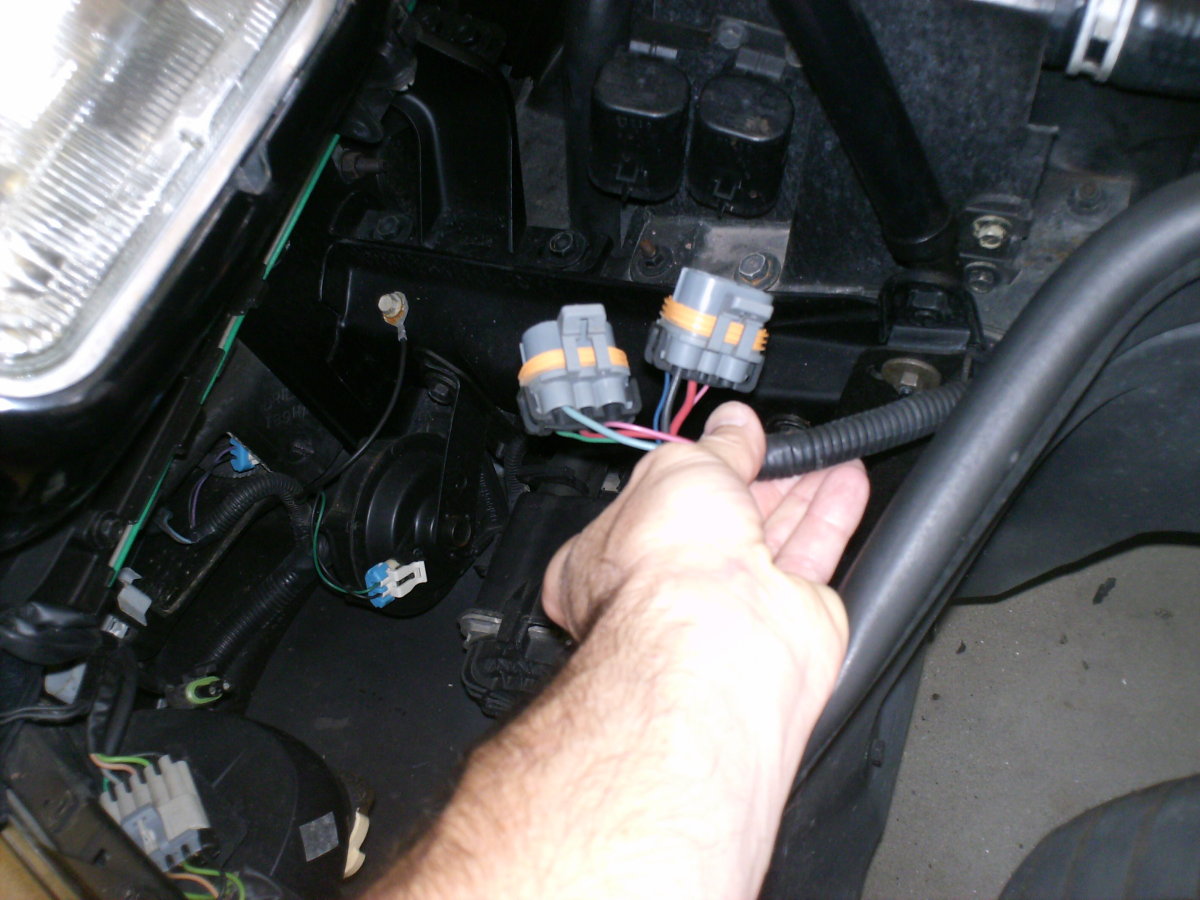
fan relays
BTW
http://northernautoparts.com/ProductDet ... uctId=2545
http://garage.grumpysperformance.co...sfire-vette-won-t-run-right.10096/#post-39656
http://garage.grumpysperformance.com/index.php?threads/got-a-cross-fire-corvette.640/#post-25768
http://garage.grumpysperformance.co...ng-tpi-crossfire-or-lt1-vette.1401/#post-9259
http://garage.grumpysperformance.com/index.php?threads/c4-c5-corvette-trouble-codes.2697/#post-7017
the symptoms sound like a defective sensor or fuel pump or fuel pump relay, but read through the links it will prove useful.
as is true with many questions here theres a few related threads that may hold the answer your looking for in the links and sub links
I bought a relay, but I don't know how to hook it up. all I see are a few weird numbers and strange symbols, what do they mean?
-a standard bosch-style relay will have 4 or 5 numbered leads (30, 85, 86, 87, and sometimes 87a). why they picked those numbers, I have no clue; but I can tell what they hook up to.
-30 = constant [positive (+)] power (usually wired directly to car battery)
-85 = coil ground (wired to the negative (-) battery terminal or any grounded metal panel in the car)
-86 = coil power (wired to the control source. could be a switch, or it could be the car's IGN or ACC circuit.)
-87 = switched [positive (+)] power output. (when the relay coil is powered, lead/pin 87 is connected to lead/pin 30)
-87a = [on 5 lead/pin relays only] this lead/pin is connected to lead/pin 30 when the coil is NOT powered.

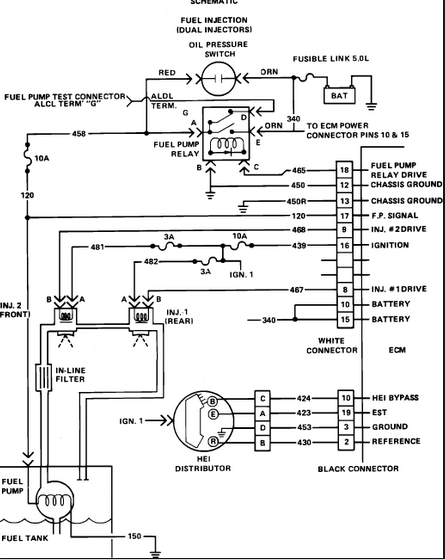
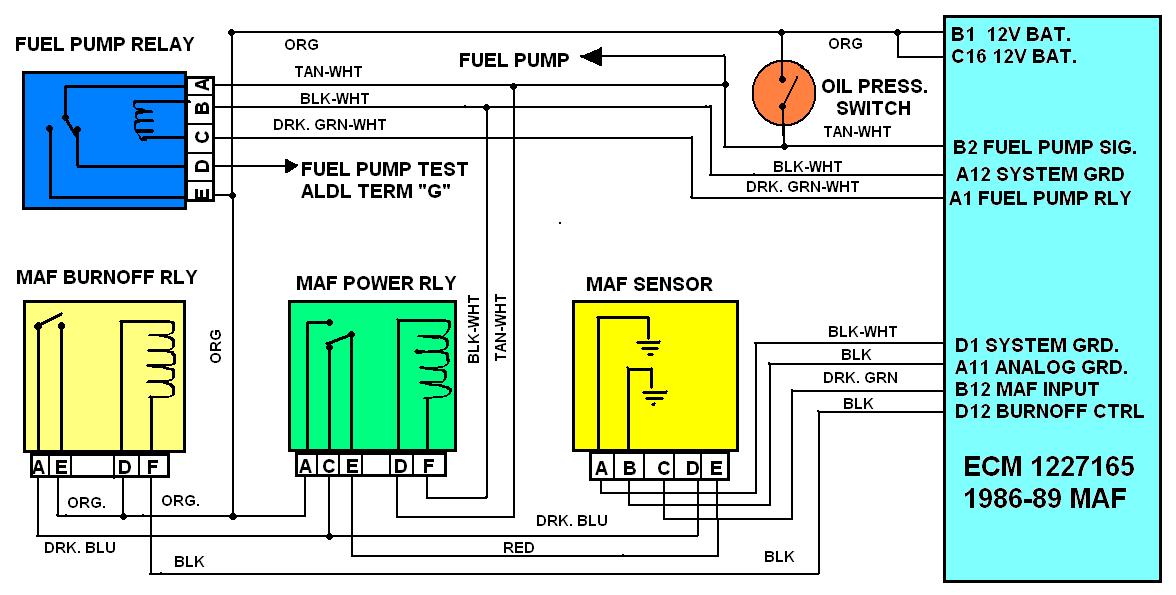
For those who are interested in the additional space and slight HP increase of an electric fan setup, but aren't too keen on spending $400, this is what you're looking for. The two speed electric fan from the 1994 to 1998 Ford Taurus or Mercury Sable with the 3.8L engine are readily available at most junkyards for around $25 or less. I got mine for $20 so the guy wouldn't have to make any change :laughing:
It's a 16" diameter fan and I've seen a variety of CFM ratings. The general consensus is that on low speed it pulls about 2000 CFM and on high upwards of 3500 CFM :surprised Not too shabby for a junkyard fan. It's easy to see why this is such a popular conversion on lots of other cars from offroad rigs to hotrods. I'm surprised I've never seen one on a 'vette before. However, it can be a power hog on the high speed. Again, drawing on internet research the fans are said to draw up to 90 amps on startup of the high speed and up to a continuous 33 amps. A bit much for 10 gage wire and a 30 amp fuse, but you should be able to rely on the low speed and use the high speed only for extreme cases. Unfortunately I don't have an ammeter much less an oscilloscope to confirm or deny any of those numbers.
I mounted the fan to a 31" Tru-Kool radiator that I did an install thread about a year ago: cheap cooling sytem upgrade thread
I got some 1/8" by 1" aluminum and some 1/4" bolts and washers from Ace hardware. I bent the aluminum to make 4 brackets that wrap around the top and bottom flanges of the radiator and bolt to the fan shroud. Here's the fan with the brackets mounted up:

I also cut 4 slots in the shroud to get a wrench on the nyloc nut on the inside of the shroud. This makes installing/removing the fan from the radiator much easier.


So you've got the fan mounted to the radiator, now how do you make it all work? I wired mine up to use two temp switches. I put a 195* temp switch up by the radiator inlet and a 185* temp switch by the radiator exit. The 185* switch controls the low speed of the fan, the 195* switch controls the high speed. In theory, the low speed switch should kick in before the high speed switch because the water coming past the thermostat shouldn't be too much higher than 180*. Once the low speed fan has turned on it should be able to maintain enough cooling for normal conditions. The 195* high speed should be only for extreme cases. Here's the wiring diagram for such a setup:
However, after a little testing (more on that later) I've found that I'm better off just running the low speed fan. The fan runs less and still provides plenty of airflow through that big alum radiator. Here's a simplified diagram for just one switch:
Don't forget to run a ground wire from the radiator to the frame. The temp switches ground through the threads, so don't use any sealant or teflon tape on there.
I got the wire and SPST from Radio Shack and the SPDT relay and most of the crimp terminals from Autozone. If I were to do it all again I'd get actual Bosch relays online since they're pretty reasonably priced.

https://www.summitracing.com/parts/dak-pac-2750/reviews

Initial Reaction/Evaluation:
The 195* switch needs to be at least a 205*. It would come on all the time and run way too long after the engine is shut off. Oddly enough, it would run for maybe 30 seconds after killing the engine and then shut off. But within a few minutes it would come back on and then run for 10 to 15 minutes. At this point I just disconnected the wire going to that switch and am very happy using only the lower switch. I duct taped my multimeter to the windshield and could watch it kick on and off as I drove around the neighborhood and it stayed off most of the time I was over 55 mph.
I have also noticed that the battery guage in the center console sits at +20 most of the time. I'm assuming this is an ammeter since its range is -40 to +40. If the engine is off and the fan is on, it sits at 0. But if the engine is on it sits at +20. Is this normal and I just haven't noticed it before now? Or is the alternator somehow seems the additional current draw of the fan and overcompensting? Do I need to upgrade alternators?
I did not notice any major performance increase. It's tough to compare to 3 weeks ago when I drove it last, but I'd definitely say a clutch fan in good working order is not sucking that much HP. Don't expect to see 15 HP on the dyno because you switched to an electric fan.
All in all I'm very pleased. It cools like a champ and opens up a LOT of room in front of the engine. Also gets that finger chopper out of the way.

relay
http://www.amazon.com/Absolute-RLS125-1 ... 436&sr=1-1

got some good info...
Alternator is getting VERY HOT. Definitely the source of the hot electronics smell. After 15 minutes of testing with the engine at idle I could comfortably rest my hand on the steering box. I touched the alternator and damn near cooked my fingers. Not driving this thing until I get a new one. It might have something to do with the fact that it's a 42 Amp alternator :lookinup: Guess that's what you get when you have no options whatsoever.
Here's the data:
reving it up to 2500 rpm only got the voltage up to 13.27 V
I recieved a few questions via PM and thought I'd post the answers here in case it helps someone else.
When i buy a fan do i want a pusher or puller?
depends on which side of the radiator you want to mount it on. If you want it on the back of the radiator (typical instll) you need a fan to pull the air through the radiator. If you want it on the front of the rad, you need a fan to push it through the radiator. The Taurus fan is obviously a puller.
Wiring, relays, switches?? what and where, or what would i ask for if i went to advanced auto.
Crash course in relays:
A relay uses a low current (control) circuit to switch a high current (power) circuit on and off. We use the temperature switches to open or close the control circuit. When the 185* temp switch is exposed to 185* coolant it switches closed and completes the control circuit. The relay sees that and closes the power circuit, sending power to the fan. The temp switch will open at 20* cooler than where it opened. Check here for more in-depth explanation: http://www.bcae1.com/relays.htm
Bosch part numbers for the relays:
40 Amp SPDT - 332 209 150
40 Amp SPST - 332 019 150
http://terminalsupplyco.com/Store/Default.aspx?CAT=EC070010
Speedway Motors part numbers for Spal Temp Switches:
195* on 175* off - 91064026-195
185* on 165* off - 91064026-185
If you look around Speedway's site or Summit you can find wiring harnesses for fairly cheap that will save your some effort of putting together the harness from scratch. I haven't seen one set up for 2 switches, but as I stated above, that didn't appear to be necessary.
What do i use for a 12 volt power source?
I ran power from the large terminal on the starter. Take a voltmeter under the car with you (if you don't have a voltmeter, get one. A cheap one from Radio Shack or Autozone will work. I have a handy automotive multimeter from Autozone that tells engine RPM, dwell, etc. Great tool for $45). Put one wire from the voltmeter to a clean spot on the frame. That's your ground, so typically use the black wire from the meter. Now put the other wire on the big starter terminal. You should see around 12 volts displayed on the meter. If not, try the other terminals until you find the right one.
Another alternative would be to get power from the power block (I think that's what it's called) mounted on the driver's side fender. Look for several heavy wires going to a couple terminals. Same procedure to find the 12V source. The power block may be a switched source, so test that one with the key in the "on" position.
Can i just wire everything up to a switch and mount it on my console??
That is one option, but it's dangerous. All you have to do is forget to switch it on and you'll cook your engine. Not something I'd want to risk. The absolute simplest alternative it to just hook the fan to a switched voltage source (only gets power when the key is in the "on" position). Then any time the engine is running the fan is running. That method is harder on your alternator and the fan as well as the rest of your electrical system. Just like any other component, these things have an expected life. So running the fan when it doesn't need to be on will burn it out sooner.
Hope that helps. Best of luck!
theres also aftermarket kits!
theres INSTRUCTIONS with the kit, but basically you install the sensor and wire in any fan you choose to , following those instructions and using the new sensor. you can use the original fan, but in most cases a larger aftermarket fan or an additional transmission cooler is used. the sensor screws into the cylinder head
you can also install just an aftermarket fan

http://store.summitracing.com/partdetail.asp?autofilter=1&part=FLX-365&N=700+115&autoview=sku

http://store.summitracing.com/partdetail.asp?autofilter=1&part=HFM-ZFB16S&N=700+320174+4294775279+115&autoview=sku

http://store.summitracing.com/partdetail.asp?autofilter=1&part=DER-13720&N=700+115&autoview=sku
http://store.summitracing.com/partdetail.asp?autofilter=1&part=DER-15800&N=700+115&autoview=sku

http://store.summitracing.com/partdetail.asp?autofilter=1&part=PRM-12318&N=700+115&autoview=sku
http://garage.grumpysperformance.co...lf-the-time-starts-and-dies.11187/#post-50245
IM currently using this on my 1985 corvertte but have used others in the past
IF YOUR ON A REALLY LIMITED BUDGET, TAURUS FANS FROM A SALVAGE YARD CAN NORMALLY BE FOUND DIRT CHEAP........HERES INFO LARRY POSTED
"The two diagrams above show how to build and wire an auto relay switched 2-speed FORD TAURUS fan.
Parts needed......10 guage wire for the power circuit. 18 guage wire for the control cicuit.
Three relays..... 1) High speed relay, Tyco VF7-12V,70amps
2)Low speed relay and Aux relay, standard BOSCH relays
Two switches,,,,.1)Low speed temp. switch- Adj. Flexilite, FLX-31147 from SUMMIT.
2)High speed temp. switch from Standard Motor Products, TS-158 or TS-392.
I put the adj. low speed switch and the three relays in seperate relay boxes and mounted them in the engine comp. The high speed temp switch I mounted where one of the heater hoses went. Est. cost of parts, less the fan, is $50.00 . 10 guage wire is used in the power circuit and 18 guage in the control circuit. The 12V switched control circuit can be connected to any live connection with ignition on.
The control circuit shown is as follows..... When the temp. reaches your set low speed figure, let's say 190 deg.the low speed relay is energized thru pin 86, 85 connects to 87A of the AUX relay and pulls 30 of that relay, 87 of the low speed relay and 30 are closed sending power to the fan to run at low speed.
When the temp. reaches your high speed switch figure, let's say 210 deg. pin 86 of the AUX. relay energizes thru 85 and 30 releases from 87A of the low speed relay and connects with 85 of the high speed relay which thru 87 of that relay powers the fan to run at high speed.
ARE we confused yet?????
When the temp falls below the high speed swich figure the AUX relay will switch back to the low speed relay.
Therfore low and high speeds will never be on at the same time and you will have the following conditions...
1) No fan on.
2) Low speed on.
3) High speed on."
BTW
the out flow connection for the trans flluid from the trans which should go to the radiator LOWER connection.
Just remove or re-route the upper radiator connection and run it thru your choice of external cooler and back to the tranny return line (upper radiator connection).


fan relays
BTW
http://northernautoparts.com/ProductDet ... uctId=2545
http://garage.grumpysperformance.co...sfire-vette-won-t-run-right.10096/#post-39656
http://garage.grumpysperformance.com/index.php?threads/got-a-cross-fire-corvette.640/#post-25768
http://garage.grumpysperformance.co...ng-tpi-crossfire-or-lt1-vette.1401/#post-9259
http://garage.grumpysperformance.com/index.php?threads/c4-c5-corvette-trouble-codes.2697/#post-7017
the symptoms sound like a defective sensor or fuel pump or fuel pump relay, but read through the links it will prove useful.
as is true with many questions here theres a few related threads that may hold the answer your looking for in the links and sub links
I bought a relay, but I don't know how to hook it up. all I see are a few weird numbers and strange symbols, what do they mean?
-a standard bosch-style relay will have 4 or 5 numbered leads (30, 85, 86, 87, and sometimes 87a). why they picked those numbers, I have no clue; but I can tell what they hook up to.
-30 = constant [positive (+)] power (usually wired directly to car battery)
-85 = coil ground (wired to the negative (-) battery terminal or any grounded metal panel in the car)
-86 = coil power (wired to the control source. could be a switch, or it could be the car's IGN or ACC circuit.)
-87 = switched [positive (+)] power output. (when the relay coil is powered, lead/pin 87 is connected to lead/pin 30)
-87a = [on 5 lead/pin relays only] this lead/pin is connected to lead/pin 30 when the coil is NOT powered.


Last edited by a moderator:


